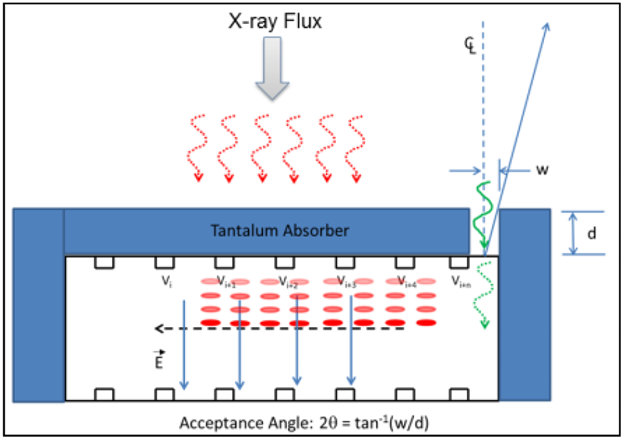Diagnostic X-Ray imaging is primarily used for imaging the human body, and advancements in this imaging technology provides medical researchers with new tools to improve care in innovative ways. This invention would benefit applications that require high temporal resolution characterization, which currently relies on streak cameras based on old, expensive vacuum tube technologies.
The approach is to develop a solid-state X-ray imager based on the architecture of the Silicon Drift Detector (SDD) which uses a series of cathode strips on both sides of a silicon wafer to achieve bulk depletion and electron drift. The invention leverages this SDD functionality to achieve signal stretching of liberated charge carriers from X-Ray photons that converts the time domain into the spatial domain. This is the key concept behind achieving high temporal resolution in a solid-state device.
- Low-cost scalable alternative to a vacuum tube streak camera in a solid-state device
- 30 micron spatial resolution; 30 picosecond temporal resolution
- Smaller footprint
- High Energy physics
- Plasma physics
- Life Sciences
Current stage of technology development: TRL 2
LLNL has filed for patent protection on this invention.
- U.S. Patent Application No. 2022/0223311 Light Field X-Ray Optics filed 11/22/21
- U.S. Patent No. 11,240,433 System and Method for X-Ray Compatible 2D Streak Camera for a Snapshot Multiframe Imager issued 02/01/22
- U.S. Patent Application No. 2021/0335866 High Temporal Resolution Solid-State X-Ray Detection System published 04/27/21


